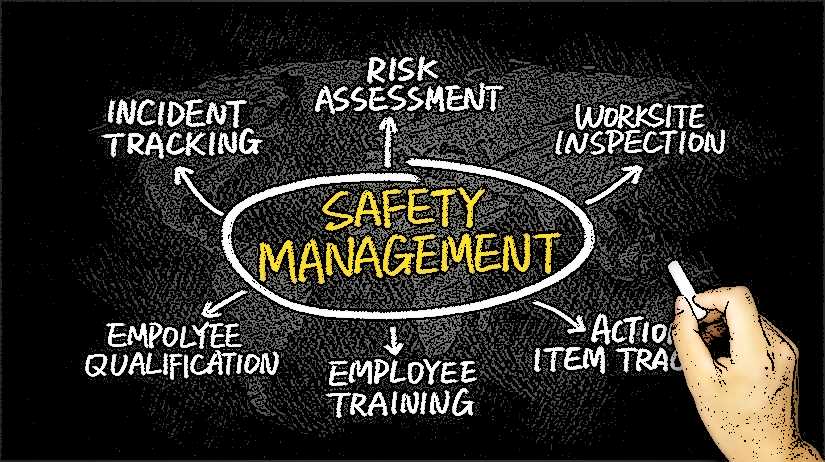It’s hard to imagine transferring loads in a factory without overhead cranes. In the last few years, the usage of overhead cranes has gradually increased. An Overhead Crane is a type of equipment consisting of two parallel beams used to transport cargo from place to place inside a factory. You can use it to manufacture or maintain applications such as warehouses, workstations, garage workshops, etc. The two beams support the crane to move the load either side to side or forward and backwards.
You can find various types of cranes in the market, such as overhead bridge cranes, overhead gantry cranes, jib cranes, etc. Different cranes have different technical features, difficulties, advantages, and disadvantages.
A crane is much heavier than you can imagine. Without proper safety measures and visual inspections, a person shouldn’t operate a crane. For any little mistake, the much heavier crane will end up causing damage or injuries to people.
Hoist Safety & Precautions
One should know the important tips and tricks before hosting an overhead crane. Before initiating the safety inspection, the operator should go through the following potential safety hazards.
- Without experienced and trained employees, an overhead crane shouldn’t be operated. Any small mistakes can lead up to the losing lives of people.
- The crane loading condition needs to be considered to avoid a load moment that could overturn the crane.
- “Hoist danger” signs must be placed around the working area. The worker shouldn’t stand or work beneath the hoist area.
- Proper cautions and measures of safety length of people should be maintained while operating an overhead crane.
- Professional inspection of the load/stress-bearing structure should be completed at least annually, with provided reports for the crane file.
- Avoid swinging a crane or grab or hook when a hoist or the overhead trolley is travelling.
- Look for loose items on the crane that could potentially fall while the crane is in operation
- The crane with operator cabin must be equipped with a fully-charged fire extinguisher.
- Check that the bridge and trolley are on-track and functioning smoothly.
- The moving parts of the crane must be guarded for the safety of the people.
- Stability of a crane highly depends upon the ground's quality and levelling for optimal rotation and operation. The boom's angle, the load weight, and the radius to the load gravity determine the crane's stability up to some extent.
- Ensure that the load can travel without impediments.
- Do not leave the load unattended.
Any other recommended special safety details must be included in the instruction manual and should be manually checked before hoisting an overhead crane.
Proper Safety And Maintenance
Proper crane maintenance must be given the highest priority. While in operation, a crane poses a lot of health hazards. The following preventive methods must be taken to ensure safety.
- For safety purposes, inspections of worn or cracks in the wielded area must be checked.
- The hook roller brackets, welds, locking devices, bearings, pins, shafts, gears, and removable outrigger attachment must be checked before using.
- Check all brakes, including both the bridge and trolley motor brakes, before the start.
- The main chords and lacings must be checked for signs of paint cracking or flaking.
- You are likely to ensure that the bridge and trolley motor brakes function properly and also check if all the below-the-hook devices are in good condition.
- Test proper calibration on all indicators, including load and boom angle indicators of the crane.
- Correct response of brakes, motion lever, and locking devices must be checked. Apart from that, the accuracy of the rated capacity indicator (RCI) or load moment indicator (LMI) must be checked.
- The crane must be inspected periodically. This includes loose, missing bolts, pins or nuts, cracked, worn or distorted parts.
- You need to give additional attention to the hook block. It would help if you inspected whether the wire rope and load chain are in the right positions or not. If those are not in the right positions, fix their positions.
- The operator should be very attentive while the crane is in motion.
- Make sure there’s no kinking, cutting, crushing, un-stranding or thermal damage to the wire rope and the chain sprockets are operating smoothly.
- The safety must be checked or inspected by professionals, and recommendation should be given for better safety of the crane’s health
Every crane should have a proper inspection and maintenance plan, based on the use of the machine and the manufacturer’s recommendations. Serious damages can take place if the maintenance is not done properly. The crane must be stopped from using if any malfunction or unusual noise is detected. Not only to operate the crane, safety and inspection must also be done by qualified and skilled operators. All the parts that were repaired creating safety hazards must be corrected. So, if you continue to operate your cranes with known safety hazards, then you are putting your worker’s safety in great danger.




